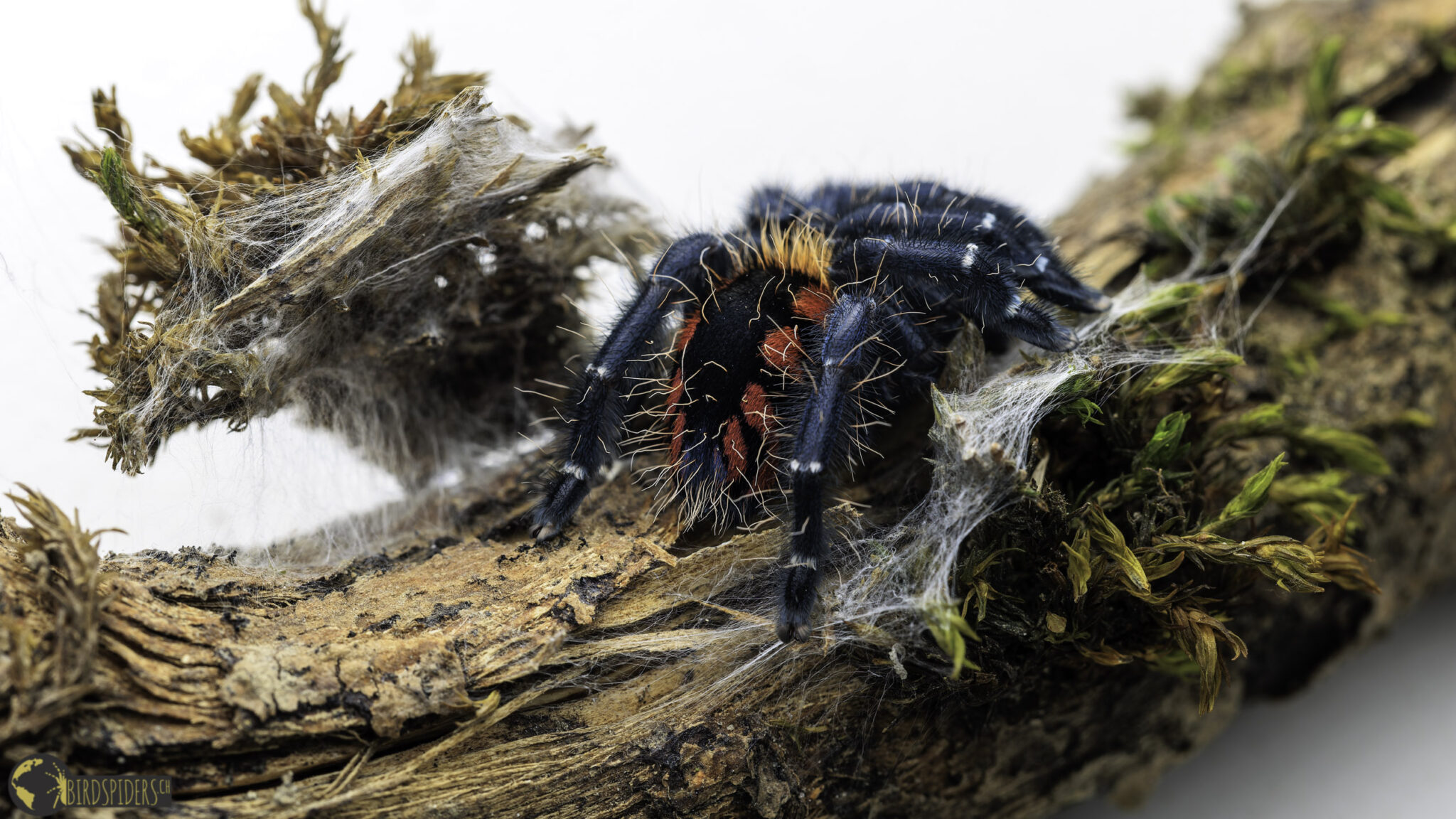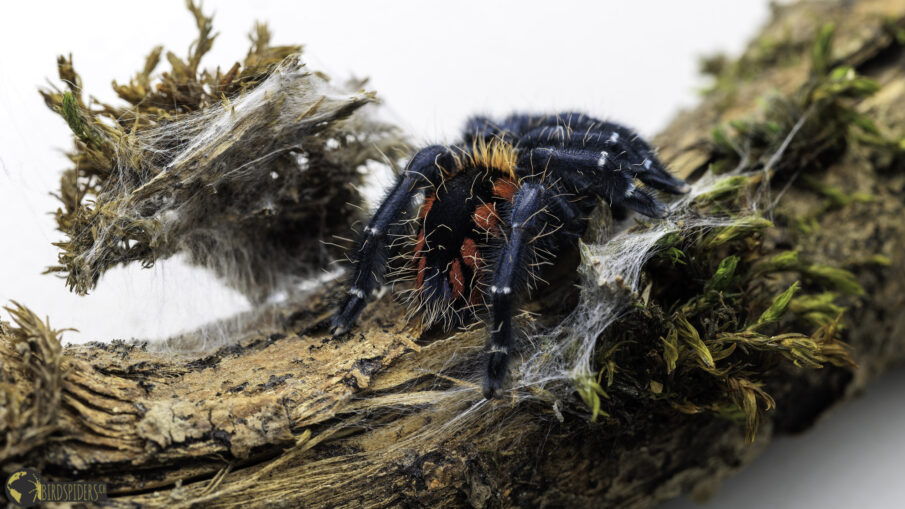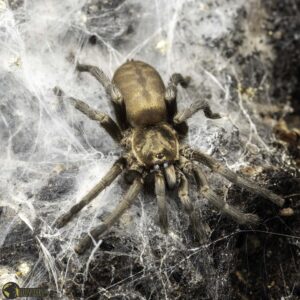Overview
Typhochlaena costae is a fascinating species of tarantula known for its vibrant colors and unique behavior of constructing trapdoors. Native to Brazil, this tarantula skillfully camouflages itself by creating silk-coated entrances to its burrows, blending seamlessly into its environment. These bright hues are not just for show—they play a crucial role in the spider’s survival and habitat protection, making Typhochlaena costae a remarkable example of nature’s creativity.
Natural History of Typhochlaena
Typhochlaena costae belongs to the family Theraphosidae and is native to the forests of Brazil. This species is arboreal, meaning it lives primarily in trees, where it constructs trapdoors and silk bridges to navigate and protect itself. The trapdoor serves as a hidden entrance to its retreat, allowing the spider to ambush prey while remaining concealed from predators.
The vibrant coloration of Typhochlaena costae is believed to aid in camouflage among the colorful foliage and bark of its habitat. This adaptation helps the spider avoid detection by both predators and prey. Recent studies have also shown that this species exhibits selective behavior in choosing tree species for its habitat, indicating a sophisticated interaction with its environment.
Taxonomy & Systematics of Typhochlaena costae
Typhochlaena costae was first described by Bertani in 2012. It is classified within the genus Typhochlaena, which falls under the family Theraphosidae, commonly known as tarantulas. The species is accepted and recognized in scientific literature, with holotype and paratype specimens deposited at the Instituto Butantan in São Paulo, Brazil.
- Family: Theraphosidae
- Genus: Typhochlaena
- Species: Typhochlaena costae
- Distribution: Brazil
Key taxonomic references include:
- Bertani, R. (2012). Revision and biogeography of Typhochlaena and related genera.
- Andre & Hüsser (2018). Insights into the ecology and lifestyle of Typhochlaena.
- Andre (2020). Study on tree selectivity by Typhochlaena costae.
Husbandry of Typhochlaena costae
Keeping Typhochlaena costae as an exotic pet requires understanding its natural arboreal lifestyle and habitat needs. Here are some husbandry tips for enthusiasts:
- Enclosure: Provide a tall terrarium with plenty of vertical space and branches for climbing.
- Substrate: Use a mix that retains moisture but allows for burrowing, such as coconut fiber or peat moss.
- Temperature: Maintain a temperature range of 24-28°C (75-82°F) to mimic its tropical environment.
- Humidity: Keep humidity levels around 70-80% to support healthy molting and comfort.
- Feeding: Offer a diet of live insects such as crickets, roaches, and mealworms.
- Hiding spots: Include silk-lined retreats or artificial trapdoors to replicate natural hiding behavior.
Because of its trapdoor-building behavior and arboreal nature, Typhochlaena costae requires a habitat that encourages natural behaviors to thrive in captivity.
References
- Bertani, R. (2012). Revision, cladistic analysis and biogeography of Typhochlaena C. L. Koch, 1850, Pachistopelma Pocock, 1901 and Iridopelma Pocock, 1901 (Araneae, Theraphosidae, Aviculariinae). ZooKeys, 230, 1-94. doi:10.3897/zookeys.230.3500
- Andre, C., & Hüsser, M. (2018). About trapdoors and bridges – new insights in the little-known ecology and lifestyle of the genus Typhochlaena C.L. Koch, 1850. Journal of the British Tarantula Society, 32(3), 3-29.
- Andre, C. (2020). Tree selectivity by the theraphosid spider Typhochlaena costae Bertani, 2012 (Araneae, Mygalomorphae, Theraphosidae). Journal of the British Tarantula Society, 34(3), 22-41.
- GBIF.org (2019). GBIF Home Page. Available from: https://www.gbif.org






